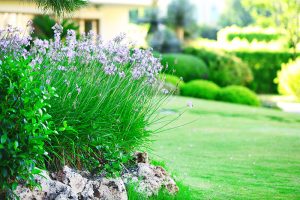Landscaping Resources for Property Managers
 As a property manager, you have the well-being and welfare of the entire premises on your shoulders. Yet no matter how capable you personally may be, it is impossible for you to see to every aspect of the property’s needs first hand. The key to keeping your job as stress-free and rewarding as possible is to compile a list of high quality resources for every aspect of the property’s upkeep. In this short post learn about must-have landscaping resources you should always keep at the ready.
As a property manager, you have the well-being and welfare of the entire premises on your shoulders. Yet no matter how capable you personally may be, it is impossible for you to see to every aspect of the property’s needs first hand. The key to keeping your job as stress-free and rewarding as possible is to compile a list of high quality resources for every aspect of the property’s upkeep. In this short post learn about must-have landscaping resources you should always keep at the ready.
A Landscaping Calculation Tool
As a new property manager, one thing you want to know quickly is how much landscape you actually have to manage! Armed with a property map showing landscape zones, types of greenery and square footage, you can create an annual plan that shows you the quantity of supplies that will be needed for each area (flowers, plants, mulch, fertilizer, soil, etc.). Creating an annual plan can help automate the process of maintaining the landscape seasonally as well.
There are many great landscaping calculators available and most are free, so it is just a matter of finding one that you personally like.
A System for Gathering Landscaping Bids
You may be lucky and walk into a property management position where there is a pre-existing bid process. But if there is no process, it will be up to you to create one. You will need a bid template and a list of bidding guidelines that provides enough structure so you can compare competing bids side-by-side and choose the most advantageous one.
A Safe and Clearly Labeled Storage Center.
One thing all landscapes need is storage space. From pest control to fertilizer, reseeding to lawn care, you will need to designate a space that is secure and located away from tenant traffic to store your landscaping supplies.
An alternative is to contract out the entire function of maintaining the landscape to a contractor who will provide their own supplies, materials and equipment. However, not all properties are able to fund this type of outsourcing. If you fall into the latter category, you must also be sure you clearly mark and label your storage center itself as well as each item stored there for liability purposes.
An Automated Irrigation System.
An automated or “smart” irrigation system not only allows you to control water usage (and thus monthly water costs) but also guards against manual under- or over-watering. The best irrigation systems have auto-detectors for rain so you don’t use water when it is raining. You should also be able to program your irrigation system to dispense more water during hot, dry seasons and less during cool, wet seasons.
In this, having a quarterly/semi-annual irrigation inspection can help ensure your system is minimizing water over-use and maximizing efficiency.
A “Smart Planting” Plan by Plant Hardiness Zone.
Plant hardiness zones indicate which types of greenery will grow best in which climates. By selecting only greenery that will grow well in your zone, you can ensure the best use of your landscaping budget. As well, certain plants or flowers may be more or less maintenance intensive. Whether you choose to retain the services of a landscaper or consultant or you research this on your own, you should develop a list of acceptable plants and grass types and strive to select the least maintenance intensive greenery for your landscape.
An alternative to traditional landscaping (lawn, shrubs, flowers, trees) is to install a rock garden that features hardy moisture-intolerant plants like succulents along with a water feature.
